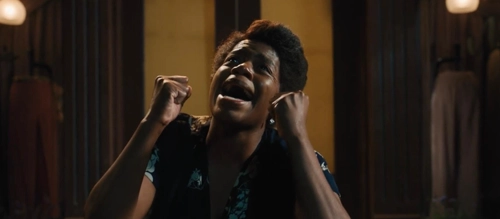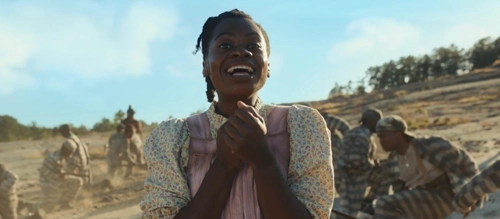The Color Purple (2023) Review

The Color Purple (2023)
Director: Blitz Bazawule
Screenwriter: Marcus Gardley
Starring: Fantasia Barrino, Danielle Brooks, Taraji P. Henson, Colman Domingo, Corey Hawkins
Over the years, there have been multiple adaptations of Alice Walker’s 1982 novel “The Color Purple”. Most notably, the book had previously been adapted for the screen in the 1985 film directed by Steven Spielberg. Almost 40 years later, in 2023, there is now a second screen adaptation directed by Blitz Bazawule, a Black director adapting a story originally written by a Black author. This time, Spielberg is returning to the story as a producer, along with Oprah Winfrey (who had starred in the 1985 movie), Scott Sanders, and Quincy Jones. This most recent film, a more joyful and immersive presentation, is based on another adaptation of Walker’s novel, the homonymous stage musical, which debuted on Broadway in 2005 and obtained eleven Tony Award nominations.
The Color Purple tells the story of an African American woman living in the American Deep South in the early 1900s. The film starts on the coast of Georgia in 1909 where Celia (Fantasia Barrino) lives with her younger sister Nettie (Halle Bailey) and their abusive father Alfonso (Deon Cole). When the film begins, Celia is forced to marry Albert “Mister” Johnson (Colman Domingo). While her own children were taken away from her, Celia is now forced to care for Mister’s three sons and withstand her husband’s constant abuse. As the years pass, Mister drives Celia away from the person she loves the most, her sister. But Celia is not entirely alone in the world; she encounters and befriends Sofia (Danielle Brooks), Harpo’s fierce and stubborn wife, and Shug Avery (Taraji P. Henson), an independent jazz singer who will help Celia to see a new possible life for herself.
As a musical film, the soundtrack is obviously key to The Color Purple. It is used to give Celia her voice in a world in which she is never allowed to speak. At the same time, the songs allow the movie to explore her imagination and help us visualize her thoughts and dreams, giving us a very clear picture of who Celia is and who she wants to become. This is very much in line with what the musical as a genre aims to do, where the songs and dances are often used to express feelings and emotions that cannot be otherwise portrayed, just like in Singin’ in the Rain and Funny Girl.
The Color Purple is at its best when it uses film language to support the story and dance performances. During the musical scenes, the camera often pans to follow the characters, and this allows us to not only see the full choreography but also be entirely immersed in it. These moments are further brought to life with the colourful costumes that mark the time period well.

The soundtrack is undoubtedly indebted to the tradition of gospel music, which is particularly evident at the beginning of the film, as well as to the blues. The latter is particularly relevant as blues as a genre originated in the south of the United States where this movie is set. The use of blues is integral to the plot of the film, highlighting its setting, timeframe, and cultural background. Choreographically, the musical numbers in The Color Purple translate into movie language in a Broadway style, which is not dissimilar to the dancing that audiences saw a lot in the late 1950s and early 1960s musicals like West Side Story and Seven Brides for Seven Brothers.
While it is true that the plot of this film explores Black trauma, there is also space for joy and laughter in this retelling of Celia’s life. Many of the performances in The Color Purple are joyous, fun, and colourful. This stands in stark contrast with the main male figures we see throughout the film: Mister and Celia’s father, who appear as threatening and terrifying figures. The eerie music that accompanies them (especially Mister) certainly helps to create this atmosphere, as does the camerawork and the lighting. Both Celia’s father and Mister are often framed at a low angle and in low light, both of which suggest their power over Celia and how their true natures hide somewhere in the shadows. The Color Purple utilises techniques like this often, juxtaposing the happier and more energetic musical sequences with more eerie, harrowing, and serious moments, creating successful tonal changes that help the key themes to resonate.
The Color Purple is a fresh take on a timeless story, and a fitting screen adaptation of the stage musical. The movie successfully lives up to the difficult task of making Broadway numbers cinematic and, thus, translating them to the medium of cinema. It is also worth noting that, in 2023, this story centred on the struggles of an American woman is told by a Black director, as opposed to a previous adaptation. This is progress, and a reminder of how important and relevant representation is in the film industry both in front of and behind the camera.
Score: 20/24
Written by Clotilde Chinnici
You can support Clotilde Chinnici in the following places:
Portfolio: Clotilde Chinnici
Twitter: @filmswithcloe

